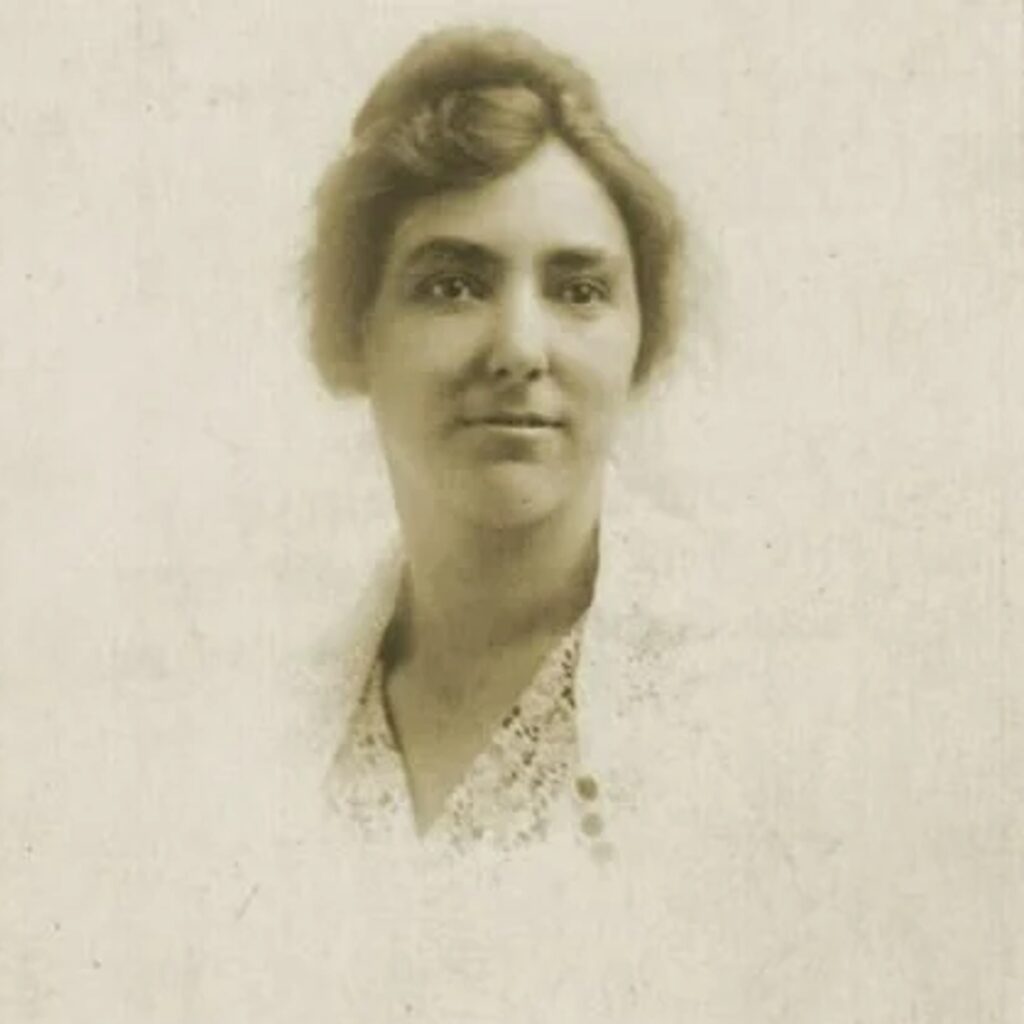Wilhelmina “Minnie” Vautrin (1886-1941) was an American missionary in China for 28 years, working as an educator and for a period as the president of Jinling College (金陵女子大学) in Nanjing. She is best known for her leading role in the protection of at least 10,000 Chinese refugees during the Nanjing Massacre in China. Sadly, the trauma of that dark experience caused her later to take her own life in the USA.
Minnie’s father was a French immigrant from Lorraine, who travelled to Illinois in 1883 to undergo a blacksmith apprenticeship. He later moved to Secor, where he married Pauline, Winnie’s mother. Her mother died when Minnie was six years old. Minnie was then placed in foster care for three years but later returned home to her father, where she assumed many household chores and excelled in school.
Minnie was accepted to Illinois State Normal University in 1903. When she graduated in 1907, she was ranked first in her class of 93 students and spoke at the commencement ceremonies. After further studies at the University of Illinois, she joined the Foreign Christian Missionary Society, accepting their request to develop a girls’ school in China. She travelled to Hefei (合肥) to establish the San Ching Girls’ Middle School.
In 1918, after serving for a period of six years in China, Minnie returned to the United States for furlough. There she was recruited to move to Nanjing as president of Jinling College for one year. Minnie later decided to extend her one-year agreement. She created courses on education administration and management and a student-teaching programme. She also built an elementary school for 150 local, mostly illiterate, children who lived in homes near Jinling College’s campus. She desired that through this school the Jinling students might “walk out of their ‘ivory tower’ to see and understand the suffering of the poor and to devote their lives for the betterment of society.”
The year 1937 brought a strong change of direction for Minnie. As the Imperial Japanese army threatened to invade, Minnie worked to protect the college. Though the American embassy arranged for the evacuation of Americans from the city, Minnie wrote “I personally feel that I cannot leave… Men are not asked to leave their ships when they are in danger and women are not asked to leave their children.”
The foreigners who chose to stay in Nanjing organized the International Committee for the Nanjing Safety Zone (ICNSZ) on November 15, 1937. The committee requested that the Japanese and Chinese governments treat the refugee zone of Nanjing as neutral, and both nations agreed and granted the ICNSZ neutrality.
In the first few nights of the Japanese attack on the city, 850 refugees came to Jinling College, which was designated as one of the twenty-five refugee camps in Nanjing. Jinling College at times harboured up to 10,000 women in buildings designed to support between 200 and 300. When all other refugee camps closed on February 4, 1938, a large number of women and children again sought refuge at the college, and a census in mid-March showed 3,310 refugees were resident there. Minnie would patrol the campus grounds and repel incursions of Japanese soldiers into the college and rescue and care for refugees. She saw to the burial of the dead and the reception of newborn babies and was successful in tracing missing husbands and sons. Industrial or crafts classes were provided for women who had lost their husbands so that they might support themselves. One hundred women graduated under this programme.
But in 1940 Minnie wrote “I’m about at the end of my energy. I can no longer forge ahead and make plans for the work, for on every hand there seems to be obstacles of some kind.” Suffering from severe stress, Minnie was accompanied back to the United States by a colleague.
One entry in her journal at this time said of the people and the country that she had served for 28 years: “Had I ten perfect lives, I would give them all to China.”
But the trauma of what she had witnessed was too much for her. After attempting to commit suicide using sleeping pills, Minnie appeared to recover for a short while. However, she later committed suicide by turning on the gas stove in her apartment in Indianapolis. She was 54 years old.
Having witnessed such atrocities and such heart-breaking loss, did she feel that she had not done enough, as she lived on with those nightmares? Who knows what thoughts crushed her? In our day would there be those who could reach out to help in her re-entry, working and praying to debrief her, allowing her a safe place to pour out her heart, comforting the wounded heart of a missionary hero.



